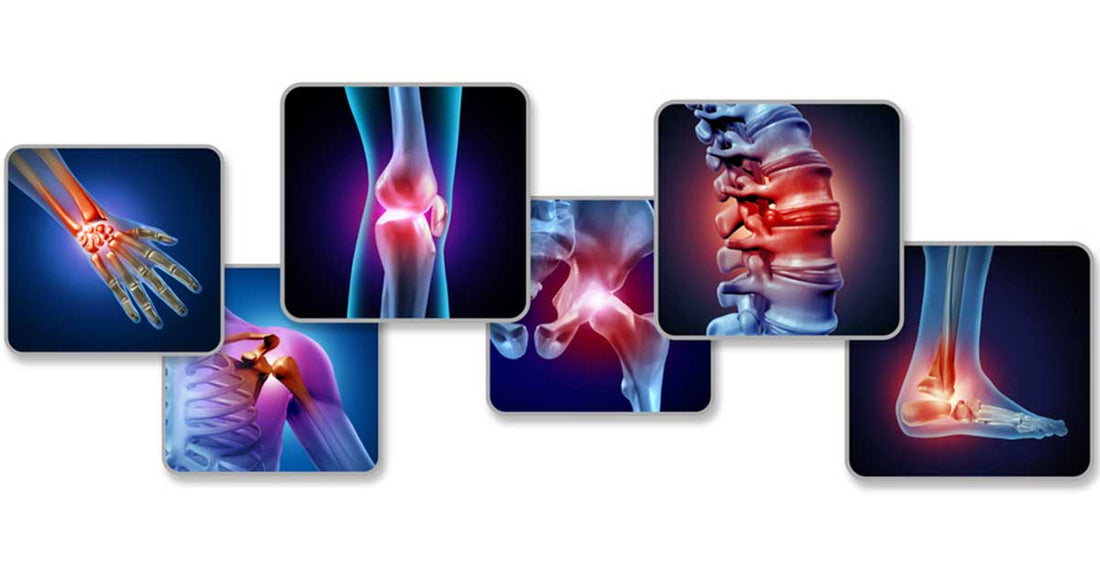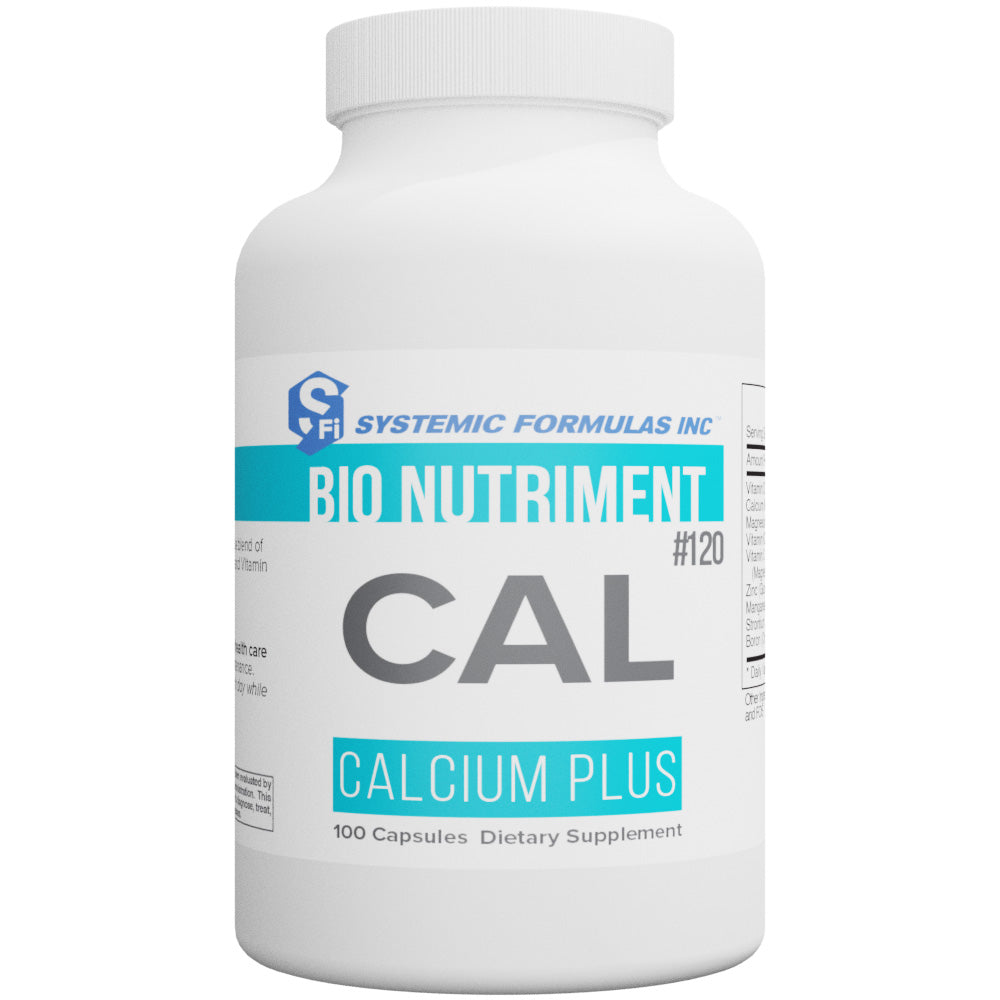Top Ways to Improve Bone Health Naturally

Share
Healthy bones provide the body with the strength and mobility it needs for protection against injury. They also store minerals and other key nutrients for later use in the body. Poor bone health can have a devastating impact on a person’s quality of life. In this article, we will discuss the signs of poor bone health, who’s at risk for poor bone health, and the top ways to keep the bones healthy.
Who’s At Risk For Poor Bone Health?
Humans are born with 300 bones, but over time some bones grow together, leaving the body with 206. The following are potential risk factors for poor bone health:
- Low levels of testosterone in men
- Low levels of estrogen in women
- Cigarette smoking and alcohol abuse
- Some medications: anticonvulsants, prednisone, dexamethasone, corticosteroids
Other risk factors are out of a person’s control:
- Age. Bone loss increases as people age.
- Body size. Small, thin women are more susceptible to bone loss.
- Gender. Women are at a greater risk of bone loss than men.
- Genetics. Children are at an increased risk of decreasing bone mass if a parent suffers from osteoporosis or bone fractures caused by osteoporosis.
- Ethnicity. Asian and Caucasian women have a higher risk of bone loss.
Symptoms of Poor Bone Health and Osteoporosis
Approximately 52 million Americans suffer from low bone density or osteoporosis (weak bones susceptible to fracture). Top signs of poor bone health include the following:
- Gum disease
- Joint and tendon soreness
- Large amounts of plaque on teeth
- Poor bone healing
- Weak muscles
- Brittle bones
There are few signs of osteoporosis in the early stages, but the risk of developing the disease increases as people age. Bones weakened by osteoporosis typically exhibit the following symptoms:
- Bones that break easier than expected
- Stooped posture
- Loss of height over time
- Back pain caused by collapsed or fractured vertebra
Note: Seek immediate medical attention for any bone-related injuries or symptoms.
Tips on Improving Bone Health
Lifestyle can play a key role in maintaining good bone health. Here are the top ways to keep the bones healthy:
1. Consume enough calcium.
The body needs calcium to build healthy bones and teeth. In addition, the heart, nerves, and muscles also need calcium to function properly. If the body does not get enough calcium, it will take it from bones, which could weaken them and increase the risk of osteoporosis.
It is estimated that nearly half the world’s population has inadequate access to calcium. In addition to bone health, insufficient calcium intake has been linked to cancer, pregnancy complications, and cardiovascular disease.[1]
Here are some of the top food sources of calcium:
- Calcium fortified foods and drinks
- Figs
- Broccoli
- Leafy greens
- Almonds
- Seeds
- Sardines
Adults aged 19 to 70 should get 1,000 milligrams of calcium per day. Children 4 to 8 years old need 1,000 milligrams, while kids 9 to 18 need 1,300 milligrams of calcium daily.
2. Get vitamin D.
Vitamin D and calcium work hand in hand: the human body can only absorb calcium if vitamin D is readily available. Studies indicate vitamin D supplementation can improve muscle strength, which can help decrease the incidence of falls and subsequent bone fractures.[2]
It is estimated that 41.6% of the US population is vitamin D deficient, with the highest rates in blacks (82.1% and Hispanics (69.2%). Studies also indicate vitamin D deficiency could be linked to cancer, cardiovascular disease, and other chronic diseases.[3]
The easiest way to get vitamin D is to simply go outside and expose your skin to direct sunlight for 15-20 minutes daily. In addition, the following foods contain vitamin D:
- Canned tuna
- Cod liver oil
- Mushrooms
- Milk
- Herring and sardines
Suggested vitamin D requirements increase with age, with babies (0-12 months) requiring 10 mcg daily, while those 70 and over need 20 mcg daily.
3. Get your vitamin K.
Vitamin K is primarily known for its blood clotting abilities, but new studies indicate it assists in bone health as well by increasing bone mineral density and reducing fracture rates in osteoporotic people. The vitamin is also believed to help affect calcium balance.[4]
Top food sources for vitamin K include the following:
- Olive oil
- Roasted chicken breast
- Leafy greens
- Broccoli
- Blueberries
The amount of vitamin K a person should consume varies by age. Children under age 13 should receive 30-60 micrograms daily. Women 19 and over should consume 90 micrograms, and men are advised to consume 120 mcg per day.
4. Eat bone-healthy foods.
In addition to the foods listed above, the following are considered the best (and worst) foods for general bone health:
|
Best Foods For Bone Health |
Worst Foods For Bone Health |
|
Grapes |
Alcohol |
|
Leafy green veggies |
Sugar |
|
Yogurt |
Excess protein |
|
Sardines |
Soy |
|
Seeds (sesame seeds, chia seeds) |
Red meat |
|
Salmon |
Salt |
|
White beans |
Soda |
|
Yogurt |
Caffeine |
|
Cheese |
Oxalate-rich foods (leafy greens and lentils, but cooking can reduce oxalate content) |
5. Get plenty of exercise.
Studies indicate disuse and inactivity can cause bone loss, while weight-bearing exercises may help maintain or even improve bone mineral density. In addition, researchers note there is a significant correlation between muscle strength and bone mineral density.[5]
Weight bearing exercises and resistance exercises force your body to work against gravity. As a result, they are considered the best exercises for bone health. Top exercises for the bones include the following:
- Jogging
- Tennis
- Dancing
- Walking
- Hiking
Note: While walking is considered a weight-bearing exercise, studies indicate it does not appear to improve bone mass, but it does limit its gradual loss. Researchers found multicomponent exercises that consist of exercises aimed at increasing or preserving bone mass are most effective. These include progressive resistance, balancing, dancing, aerobics, and strengthening exercises.[6]
Supplements For Bone Health
In addition to eating a variety of healthy foods, all-natural supplements are available to help maintain good bone health:
Systemic Formulas: #120 - CAL - Calcium Plus 
CAL - Calcium is a multi-source calcium product. It is specifically formulated to be easily absorbed in the G.I. tract, readily providing the body with the calcium it needs.
Other key ingredients include vitamin D, vitamin C, vitamin E, potassium, boron, bone ash, and oyster shell.
Systemic Formulas: #129 - DV3 - Vitamin D3 Plus Immune Support
Vitamin D is essential for both bone mineralization and calcium absorption. Studies also indicate vitamin D supplementation can improve muscle strength, which correlates to a  decrease in falls, which is one of the largest causes of fractures in the elderly.[7]
decrease in falls, which is one of the largest causes of fractures in the elderly.[7]
Vitamin D3 also contains magnesium, which is essential for bone health as well. In addition, this powerful supplement supports the liver and kidneys, and helps prevent the “adaptive” immune response, which helps reduce inflammation.
Other key ingredients include vitamin A, zinc, vitamin K, vitamin C, vitamin E, turmeric, and potassium.
Great Lakes Collagen Hydrolysate (Chocolate Flavored)
Collagen peptides play a key role in bone formation and bone mineral density. Studies indicate intake of collagen increased bone mineral density in  postmenopausal women, increased bone formation and reduced bone degradation.[8]
postmenopausal women, increased bone formation and reduced bone degradation.[8]
Also available in vanilla,Great Lakes Collagen Hydrolysatecomes in powder form, and can be added to water, your favorite beverage or smoothies. This convenience allows you to get the collagen your body needs.
Great Lakes Collagen Hydrolysate is grass fed, gluten free, non-GMO and kosher and pasture raised.
CytoMagAbsorb is a highly bioavailable form of magnesium. This means a higher percentage of the magnesium will reach the areas of the body that utilize it. It also contains di- magnesium malate, which is magnesium that is bound to malic acid.
magnesium malate, which is magnesium that is bound to malic acid.
Low levels of magnesium are believed to promote osteoporosis, oxidative stress and free radicals in the body.[9]
Summary
Strong bones are critical to maintaining a healthy standard of living. By eating healthy foods all natural supplements, getting plenty of sunshine and exercise, we can decrease the risk of having poor bone health.
References:
- Julie Shlisky 1, Rubina Mandlik 2, Sufia Askari, (et al). Calcium deficiency worldwide: prevalence of inadequate intakes and associated health outcomes. Ann NY Acad Sci. 2022 Jun;1512(1):10-28. doi: 10.1111/nyas.14758. Epub 2022 Mar 5. [PMID: 35247225].https://pubmed.ncbi.nlm.nih.gov/35247225/
- Eamon Laird, Mary Ward, Emeir McSorley, (et al). Vitamin D and Bone Health; Potential Mechanisms. Nutrients. 2010 Jul; 2(7): 693–724. Published online 2010 Jul 5. doi: 10.3390/nu2070693. [PMID: 22254049].https://www.ncbi.nlm.nih.gov/pmc/articles/PMC3257679/
- Kimberly Y Z Forrest, Wendy L Stuhldreher. Prevalence and correlates of vitamin D deficiency in US adults. Nutr Res. 2011 Jan;31(1):48-54. doi: 10.1016/j.nutres.2010.12.001. [PMID: 21310306].https://pubmed.ncbi.nlm.nih.gov/21310306/
- P Weber. Vitamin K and bone health. Nutrition. 2001 Oct;17(10):880-7. doi: 10.1016/s0899-9007(01)00709-2. [PMID: 11684396]. https://pubmed.ncbi.nlm.nih.gov/11684396/
- M Sinaki. Exercise and osteoporosis. Arch Phys Med Rehabil. 1989 Mar;70(3):220-9. [PMID: 2647057].https://pubmed.ncbi.nlm.nih.gov/2647057/
- Maria Grazia Benedetti 1, Giulia Furlini 1, Alessandro Zati, (et al). The Effectiveness of Physical Exercise on Bone Density in Osteoporotic Patients. Biomed Res Int. 2018 Dec 23;2018:4840531. doi: 10.1155/2018/4840531. eCollection 2018. [PMID: 30671455]. https://pubmed.ncbi.nlm.nih.gov/30671455/
- Eamon Laird, Mary Ward, Emeir McSorley, (et al). Vitamin D and Bone Health; Potential Mechanisms. Nutrients. 2010 Jul; 2(7): 693–724. Published online 2010 Jul 5. doi: 10.3390/nu2070693. [PMID: 22254049].https://www.ncbi.nlm.nih.gov/pmc/articles/PMC3257679/
- Daniel König,1,* Steffen Oesser,2 Stephan Scharla, (et al). Specific Collagen Peptides Improve Bone Mineral Density and Bone Markers in Postmenopausal Women—A Randomized Controlled Study. Nutrients. 2018 Jan; 10(1): 97. Published online 2018 Jan 16. doi: 10.3390/nu10010097. [PMID: 29337906].https://www.ncbi.nlm.nih.gov/pmc/articles/PMC5793325/
- Sara Castiglioni,1 Alessandra Cazzaniga,1 Walter Albisett, (et al). Magnesium and Osteoporosis: Current State of Knowledge and Future Research Directions. Nutrients. 2013 Aug; 5(8): 3022–3033. Published online 2013 Jul 31. doi: 10.3390/nu5083022. [PMID: 23912329]. https://www.ncbi.nlm.nih.gov/pmc/articles/PMC3775240/
